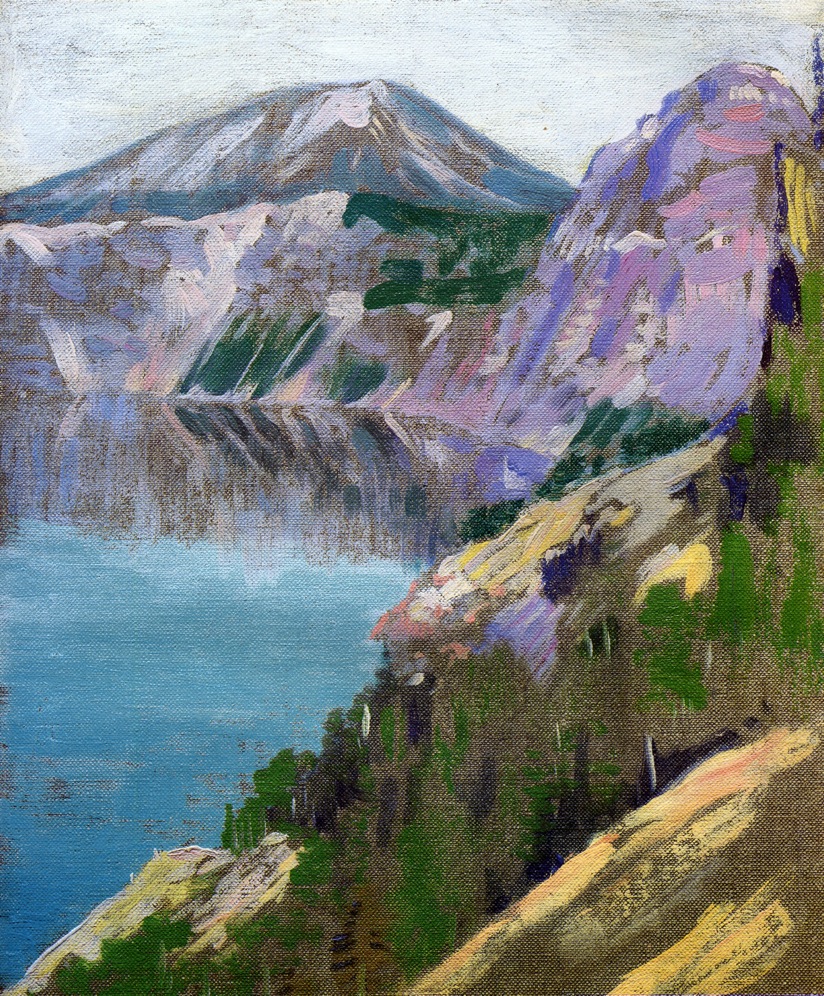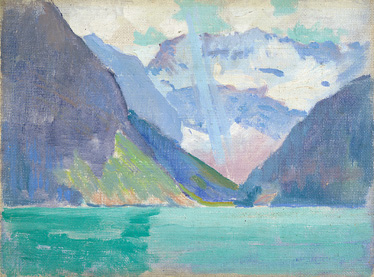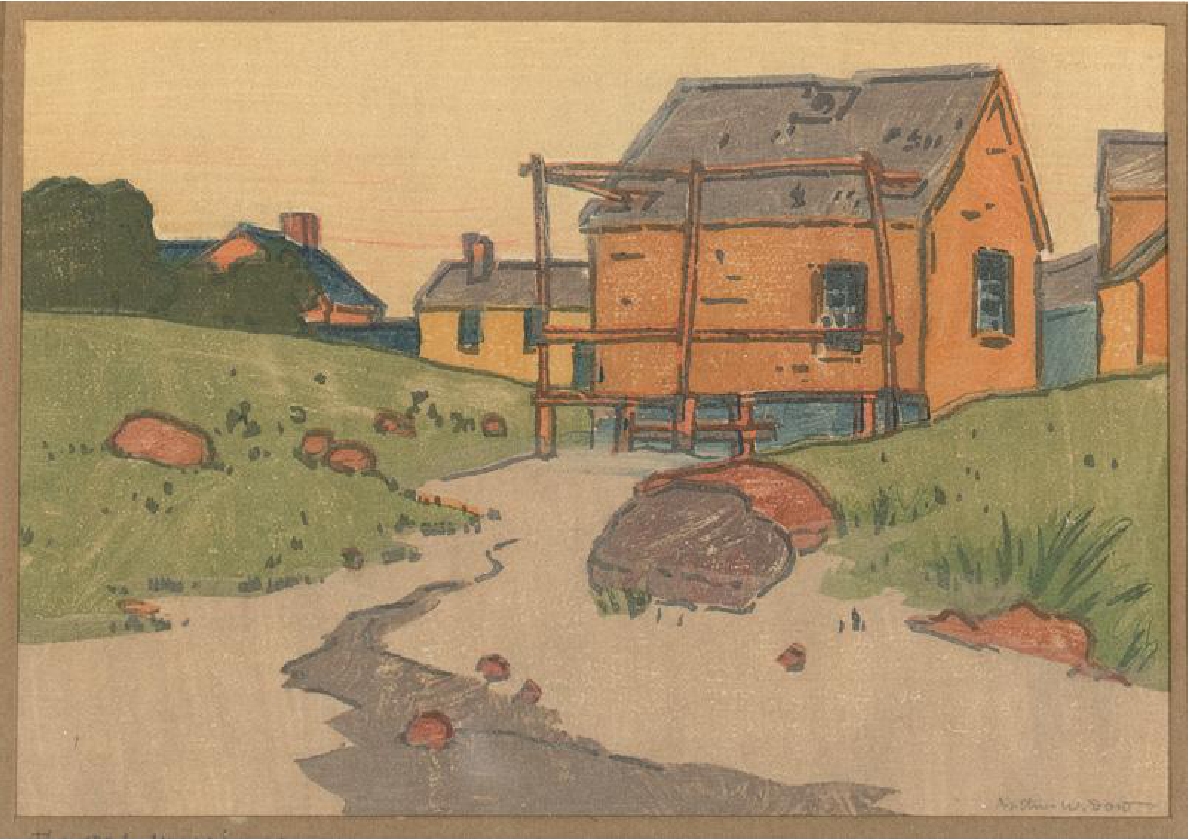Arthur Wesley Dow on:
[Wikipedia]
[Google]
[Amazon]
Arthur Wesley Dow (1857 – December 13, 1922) was an American painter,






Georgia O'Keeffe Museum.
* Arthur Wesley Dow and American Arts & Crafts, March 10 through June 18, 2000. Dow Papers Online at the Smithsonian Archives of American Art
Arthur Wesley
Marsh Creek an example of Dow's art
Online exhibition of Arthur Dow's art
Two Red Roses Foundation
{{DEFAULTSORT:Dow, Arthur Wesley 1857 births 1922 deaths Art Students League of New York faculty Académie Julian alumni Pont-Aven painters 19th-century American painters American male painters 20th-century American painters American landscape painters Columbia University faculty Teachers College, Columbia University faculty People from Ipswich, Massachusetts 20th-century American printmakers Woodcut designers 19th-century American male artists 20th-century American male artists
printmaker
Printmaking is the process of creating work of art, artworks by printing, normally on paper, but also on fabric, wood, metal, and other surfaces. "Traditional printmaking" normally covers only the process of creating prints using a hand proce ...
, photographer and an arts educator.
Early life
Arthur Wesley Dow was born inIpswich
Ipswich () is a port town and borough in Suffolk, England, of which it is the county town. The town is located in East Anglia about away from the mouth of the River Orwell and the North Sea. Ipswich is both on the Great Eastern Main Line r ...
, Massachusetts
Massachusetts (Massachusett language, Massachusett: ''Muhsachuweesut assachusett writing systems, məhswatʃəwiːsət'' English: , ), officially the Commonwealth of Massachusetts, is the most populous U.S. state, state in the New England ...
, in 1857. Dow received his first art training in 1880 from Anna K. Freeland of Worcester, Massachusetts
Worcester ( , ) is a city and county seat of Worcester County, Massachusetts, United States. Named after Worcester, England, the city's population was 206,518 at the 2020 United States census, 2020 census, making it the second-List of cities i ...
. The following year, Dow continued his studies in Boston with James M. Stone, a former student of Frank Duveneck
Frank Duveneck (né Decker; October 9, 1848 – January 3, 1919) was an American figure and portrait painter.
Early life
Duveneck was born in Covington, Kentucky, the son of German immigrant Bernhard Decker. Decker died in a cholera epidemic whe ...
and Gustave Bouguereau. In 1884, he went to Paris for his early art education, studying at the Académie Julian
The Académie Julian () was a private art school for painting and sculpture founded in Paris, France, in 1867 by French painter and teacher Rodolphe Julian (1839–1907) that was active from 1868 through 1968. It remained famous for the number a ...
, under the supervision of the academic artists Gustave Boulanger
Gustave Clarence Rodolphe Boulanger (25 April 1824 – 22 September 1888) was a French figurative painter and academic artist and teacher known for his Classical and Orientalist subjects.
Education and career The Néo-Grecs and the Prix de Rom ...
and Jules Joseph Lefebvre
Jules Joseph Lefebvre (; 14 March 183624 February 1911) was a French figure painter, educator and theorist.
Early life
Lefebvre was born in Tournan-en-Brie, Seine-et-Marne, on 14 March 1836. He entered the École nationale supérieure des Bea ...
.






Career
In 1893, Dow was appointed assistant curator of the Japanese collection at the Museum of Fine Arts, Boston under Ernest Fenellosa. Fenellosa introduced Dow to ukiyo‑e, the woodblock prints of Japan, which greatly influenced his later works. He accepted commissions for posters and other commercial work. In 1895, he designed the poster to advertise the ''Journal of Modern Art'' and in 1896, he designed the poster for an exhibition of Japanese prints. Over the course of his career, Dow taught art at a few major American arts training institutions, beginning with thePratt Institute
Pratt Institute is a private university with its main campus in Brooklyn, New York (state), New York. It has a satellite campus in Manhattan and an extension campus in Utica, New York at the Munson-Williams-Proctor Arts Institute. The school was ...
from 1896 to 1903. He also taught at the New York Art Students League, from 1898 to 1903.Columbia University Teachers College Announcements, 1906-07:13; In 1900, Dow founded and served as the director of the Ipswich Summer School of Art in Ipswich, Massachusetts
Ipswich is a coastal town in Essex County, Massachusetts, United States. The population was 13,785 at the 2020 census. Home to Willowdale State Forest and Sandy Point State Reservation, Ipswich includes the southern part of Plum Island. A reside ...
. From 1904 to 1922, he was a professor of fine arts at Columbia University Teachers College
Teachers College, Columbia University (TC), is the graduate school of education, health, and psychology of Columbia University, a private research university in New York City. Founded in 1887, it has served as one of the official faculties and ...
.
Death and legacy
Dow died on December 13, 1922, in his home in New York City. He was interred in the Old North Burying Ground in Ipswich, Massachusetts. He was survived by his wife Eleanor Pearson, whom he married in 1893.Influence on others
Dow taught many of America's leading artists and craftspeople, including:Georgia O'Keeffe
Georgia Totto O'Keeffe (November 15, 1887 – March 6, 1986) was an American modernist artist. She was known for her paintings of enlarged flowers, New York skyscrapers, and New Mexico landscapes. O'Keeffe has been called the "Mother of Amer ...
, Shirley Williamson
Shirley Williamson (1875–1944) was an American artist and educator, known for her seaside paintings and monotype prints. She was active between 1913 until 1940, in New York City, the San Francisco Bay Area and Carmel, California.
Early life ...
, Charles Sheeler
Charles Sheeler (July 16, 1883 – May 7, 1965) was an American artist known for his Precisionist paintings, commercial photography, and the avant-garde film, ''Manhatta'', which he made in collaboration with Paul Strand. Sheeler is recognized ...
, Charles J. Martin, two of the Overbeck Sisters The Overbeck sisters (Margaret, Hannah, Elizabeth, and Mary Frances) were Americans, American women pottery, potters and artists of the Arts and Crafts Movement who established Overbeck Pottery in their Cambridge City, Indiana, home in 1911 with the ...
, Delle Miller
Adele Helene “Delle” Miller (1875-1932) was an American artist, craftswoman, and teacher. She was born in Kansas, but spent most of her life in Kansas City, Missouri. She worked with various media, including metalworking and oil paints. Amo ...
, Charles Burchfield
Charles Ephraim Burchfield (April 9, 1893 – January 10, 1967) was an American painter and visionary artist, known for his passionate watercolors of nature scenes and townscapes. The largest collection of Burchfield's paintings, archives and j ...
, Isabelle Percy West and Walter King Stone Walter King Stone (1875–1949) was an American artist and illustrator, teaching art at Cornell University.
Early life and education
Stone was born in Barnard, Monroe County, New York, on March 2, 1875, the son of William Talmage and Jenny Filer ...
. One of his pupils, the educator and printmaker Pedro Joseph de Lemos
Pedro Joseph de Lemos (25 May 1882 – 5 December 1954) was an American painter, printmaker, architect, illustrator, writer, lecturer, museum director and art educator in the San Francisco Bay Area. Prior to about 1930 he used the simpler name Ped ...
, adapted and widely disseminated Dow's theories in dozens of theoretical and instructional publications (1918–1950) for art schools.
Dow also had influence at the Byrdcliffe Colony
The Byrdcliffe Colony, also called the Byrdcliffe Arts Colony or Byrdcliffe Historic District, was founded in 1902 near Woodstock, New York by Jane Byrd McCall and Ralph Radcliffe Whitehead and colleagues, Bolton Brown (artist) and Hervey White ...
.
Collections
His work is represented in public museum collections, includingAmon Carter Museum of American Art
Amon may refer to:
Mythology
* Amun, an Ancient Egyptian deity, also known as Amon and Amon-Ra
* Aamon, a Goetic demon
People Momonym
* Amon of Judah ( 664– 640 BC), king of Judah
Given name
* Amon G. Carter (1879–1955), American p ...
, Fort Worth, Texas; the Metropolitan Museum of Art
The Metropolitan Museum of Art of New York City, colloquially "the Met", is the largest art museum in the Americas. Its permanent collection contains over two million works, divided among 17 curatorial departments. The main building at 1000 ...
, New York City; Brooklyn Museum
The Brooklyn Museum is an art museum located in the New York City borough of Brooklyn. At , the museum is New York City's second largest and contains an art collection with around 1.5 million objects. Located near the Prospect Heights, Crown H ...
, Brooklyn, New York City; Museum of Fine Arts, Boston
The Museum of Fine Arts (often abbreviated as MFA Boston or MFA) is an art museum in Boston, Massachusetts. It is the 20th-largest art museum in the world, measured by public gallery area. It contains 8,161 paintings and more than 450,000 works ...
; Wadsworth Athenaeum, Hartford, Connecticut; Herbert F. Johnson Museum of Art
The Herbert F. Johnson Museum of Art ("The Johnson Museum") is an art museum located on the northwest corner of the Arts Quad on the main campus of Cornell University in Ithaca, New York. Its collection includes two windows from Frank Lloyd W ...
, Cornell University, Ithaca, New York; the San Diego Museum of Art
The San Diego Museum of Art is a fine arts museum located at 1450 El Prado in Balboa Park in San Diego, California that houses a broad collection with particular strength in Spanish art. The San Diego Museum of Art opened as The Fine Arts Galler ...
; the Fine Arts Museums of San Francisco
The Fine Arts Museums of San Francisco (FAMSF), comprising the de Young Museum in Golden Gate Park and the Legion of Honor in Lincoln Park, is the largest public arts institution in the city of San Francisco. The permanent collection of the ...
, San Francisco, California; the Smithsonian American Art Museum
The Smithsonian American Art Museum (commonly known as SAAM, and formerly the National Museum of American Art) is a museum in Washington, D.C., part of the Smithsonian Institution. Together with its branch museum, the Renwick Gallery, SAAM holds o ...
, Washington, D.C.; Columbia University, New York; Ipswich Historical Society
The Ipswich Historical Society (IHS) in Ipswich, Massachusetts was founded by Reverend Thomas Franklin Waters in 1890. The Society initially had no headquarters, and met in the studio of artist Arthur Wesley Dow. They eventually found a better p ...
; Museum of the American Arts and Crafts Movement
A museum ( ; plural museums or, rarely, musea) is a building or institution that cares for and displays a collection of artifacts and other objects of artistic, cultural, historical, or scientific importance. Many public museums make these ...
; and many other public and private collection.
Ideas on teaching art
His ideas were quite revolutionary for the period; Dow taught that rather than copying nature, individuals should create art through elements of the composition, such as line, mass and color. He wanted leaders of the public to see art is a living force for all in everyday life, not as a sort of traditional ornament for the few. Dow suggested that the American lack of interest in art would improve if art was presented as a means of self-expression. He wanted people to be able to include personal experience in creating art. His ideas on art were published in his 1899 book ''Composition: A Series of Exercises in Art Structure for the Use of Students and Teachers''. The following extracts are from the prefatory chapter "Beginnings" to the second edition of this book (1912):''Composition ... expresses the idea upon which the method here presented is founded - the "putting together" of lines, masses and colors to make a harmony. ... Composition, building up of harmony, is the fundamental process in all the fine arts. ... A natural method is of exercises in progressive order, first building up very simple harmonies ... Such a method of study includes all kinds of drawing, design and painting. It offers a means of training for the creative artist, the teacher or one who studies art for the sake of culture.''
Bibliography
;Works by Dow * * * *References
External links
* *Georgia O'Keeffe Museum.
* Arthur Wesley Dow and American Arts & Crafts, March 10 through June 18, 2000. Dow Papers Online at the Smithsonian Archives of American Art
Arthur Wesley
Marsh Creek an example of Dow's art
Online exhibition of Arthur Dow's art
Two Red Roses Foundation
{{DEFAULTSORT:Dow, Arthur Wesley 1857 births 1922 deaths Art Students League of New York faculty Académie Julian alumni Pont-Aven painters 19th-century American painters American male painters 20th-century American painters American landscape painters Columbia University faculty Teachers College, Columbia University faculty People from Ipswich, Massachusetts 20th-century American printmakers Woodcut designers 19th-century American male artists 20th-century American male artists